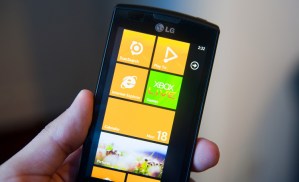
Software giant Microsoft has published “more answers” about the status of its first update to its Windows Phone 7 software update, claiming that 90 percent of users who received an update notification were able to install the new software without any problems. In Microsoft’s estimation, then, 10 percent of users who received an update notice did have problems with the software—and that leaves aside an unknown number of users who have not received an update notice because Microsoft yanked the update for their devices.
A ten percent failure rate would seem to be considerably higher than the “small number of phones” Microsoft originally acknowledged were having issues installing the update. Microsoft introduced its first Windows Phone 7 update yesterday, and was immediately deluged with reports that the new software was rendering Samsung’s Omnia 7 devices inoperable. Microsoft then withdrew the update for Samsung devices.
Among the 10 percent of people who had problems, Microsoft says almost half of them had problems for reasons unrelated to their phone devices: poor Internet connectivity, or lack of storage space on their computer. Again, doing the math, that means more than half the failures were not caused by poor connectivity or insufficient storage.
Unlike many mobile operating system updates, Windows Phone 7 devices must be updated by tethering the phones to a PC, downloading the update to the PC, and updating the phone using either Microsoft’s Zune software (for Windows) or Windows Phone 7 Connector for Mac. No over-the-air updates are available.
Although Microsoft claims “the engineering team here was prepared,” the company claims few large-scale software updates ever go smoothly, and they intend to learn from the experience and improving the process for future updates. However, the update gaffe comes at a difficult time for the Windows Phone 7 platform, which is facing strong industry skepticism that—even with Nokia on board as a powerful OEM—it can build momentum to compete with the likes of Apple’s iOS, Android, and RIM’s BlackBerry platform.


